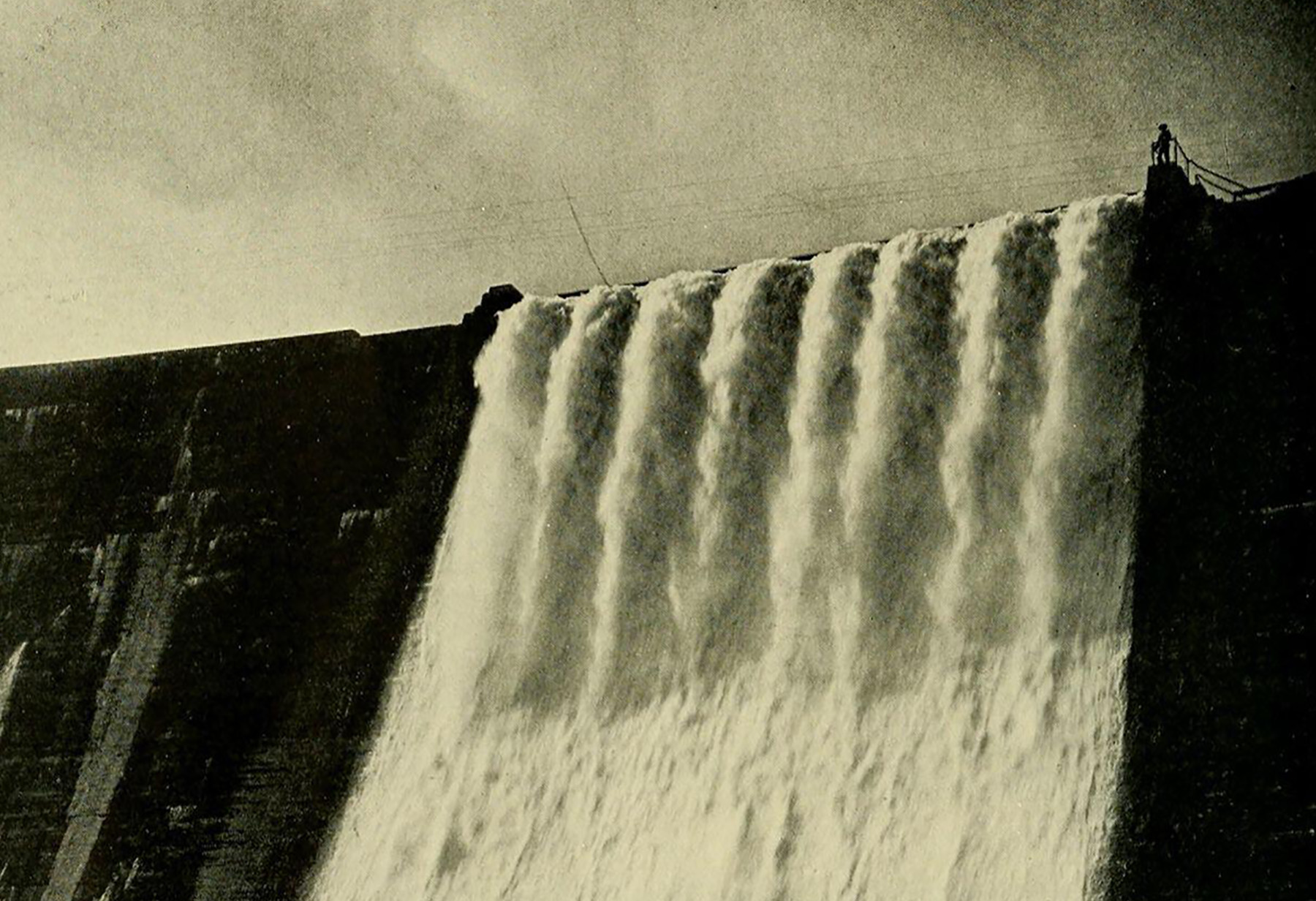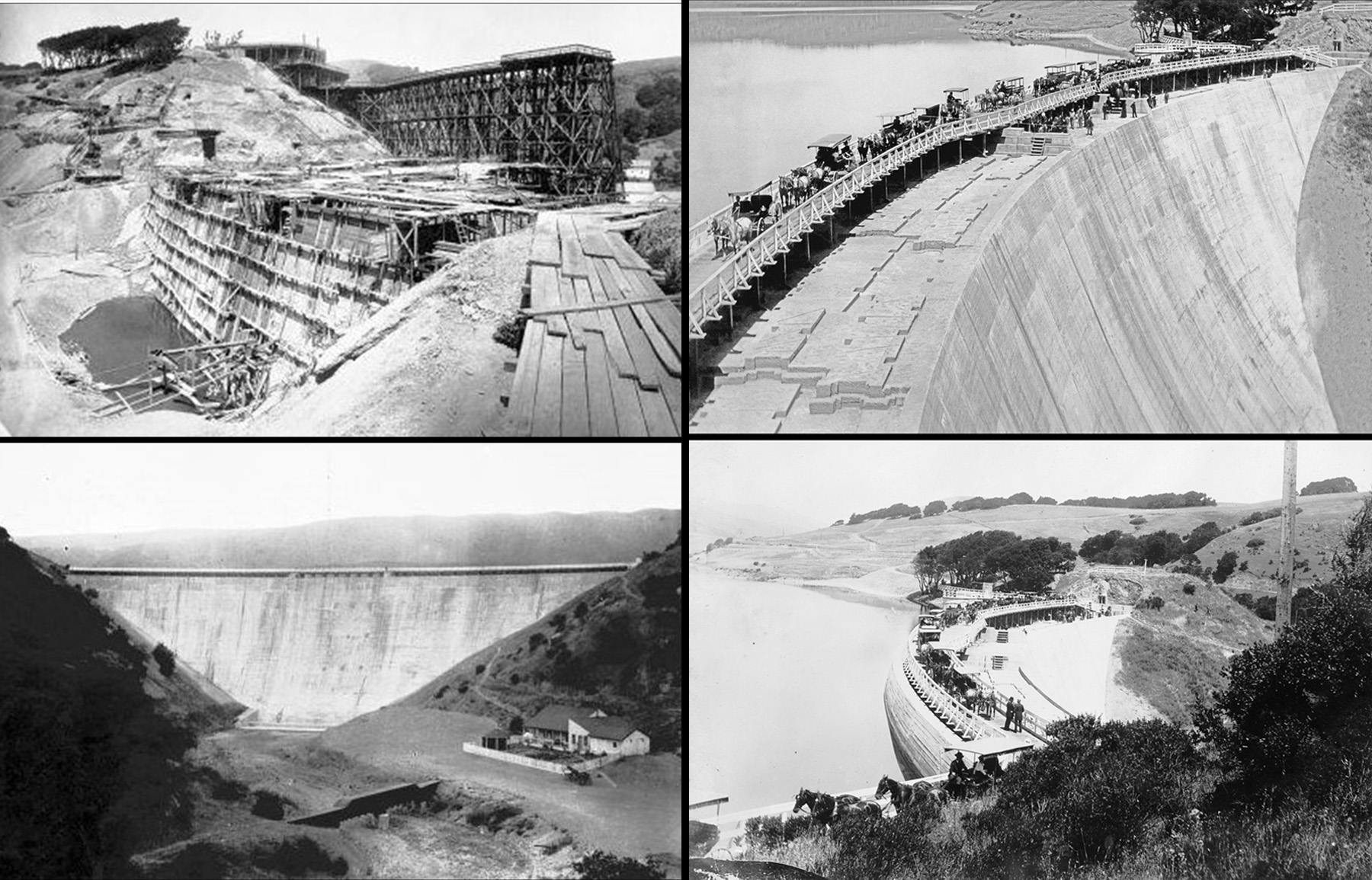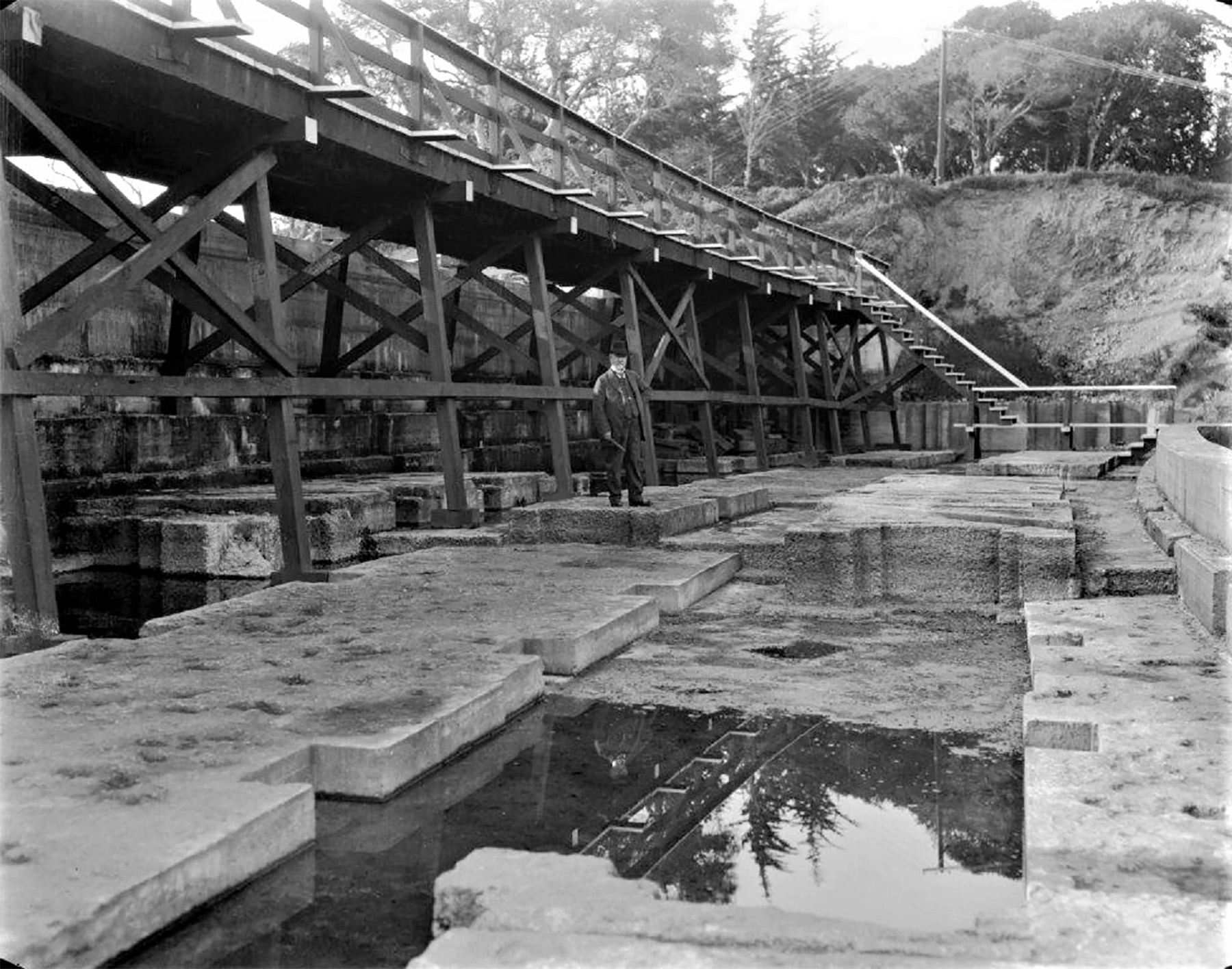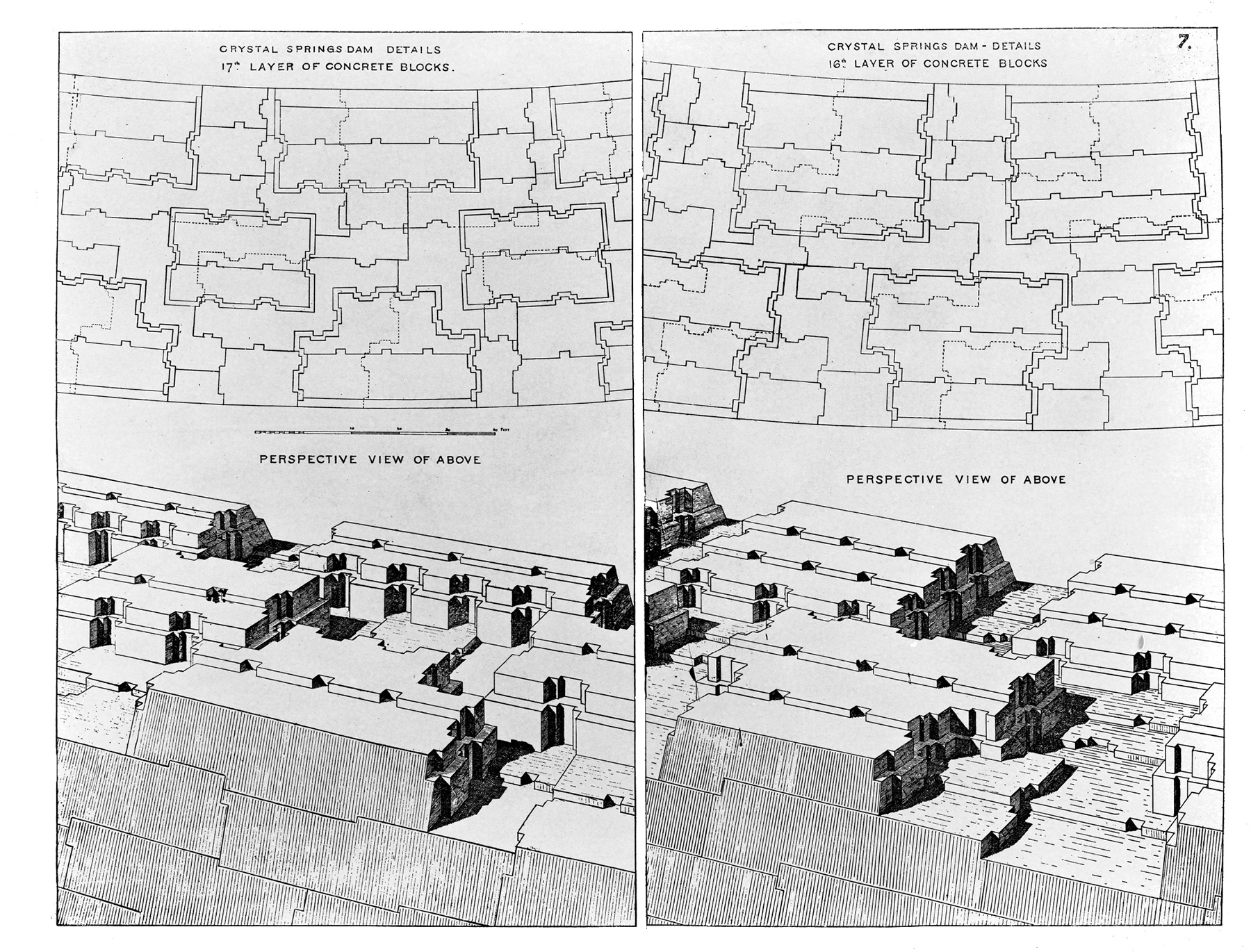
By Lawrence M. Magura, P.E., F.ASCE, BC.WRE (Ret)
Propelled by the continuing flood of riches from the Mother Lode gold mines of California and the Comstock Lode of Nevada and opportunities afforded by the newly completed first transcontinental railroad, San Francisco, by the early 1870s, was the most populous city on the West Coast and was rapidly growing in prestige.
Situated at the northern tip of the San Francisco Peninsula and blessed with one of the world’s greatest natural harbors, with saltwater on three sides and a mild Mediterranean climate, there was only one thing that threatened the city’s continued growth: an adequate water resource. Despite its optimal location, San Francisco lacked a sufficient watershed within its boundaries from which to develop a potable water supply.
The quest for water
In 1858, the Spring Valley Water Works (later renamed the Spring Valley Water Co.) was formed to develop San Francisco’s water supply by tapping the surface waters of neighboring San Mateo County south of the city. The county included the largely undeveloped 23,000-acre San Andreas Valley watershed. Work to develop the county’s water resources began modestly with the construction of two fairly small earthen storage reservoirs — San Andreas and Upper Crystal Springs dams in the watershed — followed by a more substantial stone masonry dam on Pilarcitos Creek, situated in a neighboring watershed immediately west of Spring Valley, according to an interview with Mike Housh, San Francisco Public Utilities Commission historian and archivist.
Although these projects provided some relief from San Francisco’s perpetual water shortage, it was clear that significantly more storage capacity was required to ensure the city could meet its short- and long-term water needs.
Enter Hermann Schussler, a young German civil engineer. Born on Aug. 4, 1842, he received an education in civil engineering schools in Zurich and Karlsruhe, Germany. After receiving his engineering diploma, he left his homeland in 1864 intent on making his mark in a California where opportunities for an ambitious young person were virtually unlimited.
Within months of his arrival in San Francisco, Schussler landed his first job with Spring Valley at a starting salary of $50 per month. Hired as a field engineer, Schussler was a member of the engineering team involved in the construction of the aforementioned Pilarcitos Dam.
Company managers noted Schussler’s drive and engineering competence, and his rise within the company was nothing short of “meteoric,” according to Gary M. O’Neill in La Peninsula, the journal of the San Mateo County Historical Association (Vol. XXVI, No. 2, August 1990). Within two years, he was promoted to chief engineer, his salary was more than tripled, and he was assigned to the company’s San Francisco headquarters. The company would be Schussler’s primary employer until he retired 48 years later.
Schussler encouraged the Spring Valley board of directors to purchase as much of the San Andreas Valley watershed as possible, with an eye toward eventually constructing a large dam at the mouth of San Mateo Creek canyon. With the board’s approval, agents were quietly dispatched to the area to acquire watershed property from local landowners. Within a few years, the company had purchased essentially the entire 23,000-acre watershed.
Schussler began planning for the new high dam in the mid-1880s. According to a Historic American Engineering Record report on the dam, “... when Schussler was planning and designing what was to be called the Lower Crystal Springs Dam with a projected height of 145 feet, there were only 17 dams exceeding 95 feet in height in the entire world. All 17 dams were outside of (the) United States, and although several high dams were built in the U.S. at about the same time as Lower Crystal Springs Dam, all of the large American dams were rock or earth-fill dams.” (Brad Brewster, Environmental Science Associates, Lower Crystal Springs Dam, September 2010)
Although Schussler may have preferred to build Crystal Springs Dam from these materials, no source of rock of sufficient quantity or quality existed in the vicinity of the dam site. Schussler was forced to think creatively, and he pivoted his design concept to construct the new dam using mass concrete.
It is worth noting that in the 1880s, the use of large quantities of concrete to build structures was in its infancy, and there were no existing standards or guidelines to assist Schussler in the design process, according to Chuck Spinks, P.E., M.ASCE, former chair of the ASCE History & Heritage Committee, who has studied the development of the Portland cement industry. Schussler had to rely on his formal engineering training and what he had learned from his prior work experience. He was literally on his own.

Another major challenge for Schussler was finding a source for the large quantities of Portland cement the project would require. At the time, there was no large-scale manufacturer of the cement in the country. Undaunted, Schussler procured most of the needed quantities from John Bazley White & Brothers Ltd. in Swanscombe, England, the world’s leading supplier of the product at that time.
Although the first transcontinental railroad had been completed nearly two decades earlier, by the 1880s there was insufficient transportation infrastructure in the U.S. to deliver large quantities of Portland cement overland to the project site, so it was packed into watertight wooden barrels and shipped some 16,000 nautical mi from England to San Francisco.
When the barrels arrived in San Francisco, they were loaded onto rail cars at the docks and transported by train 20 mi down the San Francisco Peninsula to San Mateo, where workers then loaded the barrels onto horse-drawn freight wagons for the final 12 mi haul to the dam site.
Sand for the concrete mix came from the local sand dunes at the then-undeveloped North Beach section of San Francisco, and a small rock quarry was developed near the dam site that supplied rock nodules that could be crushed for the concrete aggregate. Schussler also required all crushed rock and sand for the concrete to be thoroughly washed on site to remove salt, dirt, and other impurities before being mixed with the Portland cement.
Dam construction
Although Schussler settled on Portland cement for the construction of the dam, he was acutely aware of its limitations. His primary concern was the potential for cracking of the concrete due to shrinkage and heat buildup during the curing process. In response, Schussler developed an innovative solution: interlocking, irregularly shaped concrete blocks — 10-15 ft wide, 6-10 ft high, and 30-40 ft long, according to the HAER report.
Surveying work commenced in early 1886, but it was not until late in the year that things began to take shape. On Dec. 1, the Spring Valley board met and decided that construction of the main (or Lower) Crystal Springs Dam should begin immediately, according to the HAER report. By early 1887, a work camp had been established at the site that included “a lodging house, boarding house, woodshed and chicken house, stable, and officers’ quarters. The camp was later enlarged to accommodate the swelling ranks of workers and an accelerated construction schedule.”

Dam construction began in spring 1887 with clearing and grubbing of the dam site and excavation of a 6 ft deep trench to anchor the dam into bedrock. Schussler specifically required this phase of the work to be performed using only hand tools. Rock blasting was prohibited to avoid possible fracturing of the bedrock, which was a wise precaution to minimize any future leakage beneath the dam.
By 1888, full-scale construction of the dam was underway, and at its peak, the workforce numbered nearly 1,000 workers. As part of the site development plan, Schussler added a trestle structure across the dam site. Next to it, on the north side of the site, workers constructed a three-story concrete mixing platform that held six steam-powered engines, each of which was connected by a shaft to a rotating rock crusher, a revolving perforated cylinder for washing the crushed rock, and a concrete mixer — all of Schussler’s own design — according to the HAER report.
Proportions of ingredients for the concrete carefully followed Schussler’s exacting specifications: 6.5 barrels of cleaned, crushed rock; two barrels of washed sand; one barrel of Portland cement; and two-thirds barrel of water, per the HAER report.
After mixing, the concrete “was dumped into hand cars which were pushed out onto the trestle. The concrete was (then) dumped into vertical 16-inch diameter iron pipes which were placed at intervals along this trestle. These extended down to the work platform on the dam itself. Heavy steel plates were placed at the end of these pipes to absorb the blow of the falling concrete. The concrete was then quickly shoveled up and taken in wheelbarrows to its point of consumption,” according to the HAER report.
Within 15 minutes of mixing, the concrete was poured into wooden forms by a large crew of workers, according to the San Francisco Public Utilities Commission report, Lower Crystal Springs Dam. Once in the forms, Schussler’s directions called for a crew to carefully ram the wet concrete into the corners of the irregularly shaped forms in thin layers no more than 3-4 in. thick to eliminate voids. Workers then covered the blocks with boards to avoid exposure to sunlight and sprinkled them with water until the concrete hardened. Concrete placement rates approached 1,000 cu yd per day during the peak of construction.
The blocks were “allowed to set individually, initially separated from each other like the spaces between the alternate square(s) of a checkerboard,” per the HAER report. “Once fully set, the spaces would be filled in by another block. Most of the blocks were keystone shape except for recesses and projections on all sides, built this way so that the blocks could be dovetailed together.”
After each layer hardened, Schussler had a crew strip the wooden forms and remove by hand all laitance or rock pockets, which were then repaired by troweling in fresh concrete as needed before raising and reinstalling the forms and pouring the next layer. Such a level of hand-finishing work would not be possible in a later era.
Once one level was completed, the blocks of the next level were placed so that the center of each was approximately over the place where four of the blocks beneath joined. This ensured that there would be no “continuous horizontal or vertical joints through the dam. The end result of this plan was a dam with a very large amount of friction between its elements and consequently, great strength,” according to HAER.

By late 1889, the dam had risen to a height of 120 ft above the stream bed, and Schussler was inclined to consider the dam complete at that point, although he had enlarged the foundation in his original plans so the dam could be raised higher at a future date.
The winter of 1889-90 proved to be an exceptionally wet one, and by January 1890 water was flowing uncontrollably over the top of the dam. To counteract future events like this, the Spring Valley board decided to increase the dam’s height to 145 ft, a task completed by November 1890, according to La Peninsula.
Upon completion, the curved concrete gravity dam contained approximately 157,000 cu yd of concrete. Its crest length is about 600 ft, and its total capacity is approximately 19 billion gal.
Supplementary works
Schussler’s project also included construction of outlet works and a pipeline to convey stored water in Crystal Springs Reservoir to San Francisco and neighboring communities. The outlet works, which are still in use today, consist of a tower, main shaft, tunnel, and three feeder delivery tunnels, which were “built through the hill on the north side of the dam. The main outlet tunnel was drilled deep within the hill in order to be able to draw water out of Lower Crystal Springs Reservoir when it is at a low level,” according to the HAER report. The outlet works were connected to a single, 44 in. diameter, 89,500 ft long, wrought iron gravity flow pipeline that connected to a terminal storage reservoir in the city. The pipeline was constructed at a foundry in San Francisco using the highest-quality sheet iron available.
The pipeline performed well for many years before being replaced.
Seismic concerns?
The site chosen by Schussler is approximately 1,100 ft east of the trace of the northern section of the San Andreas Fault, the famous fault zone that on April 18, 1906, generated the great 7.9 moment magnitude earthquake that devastated San Francisco.
Was Schussler aware of the dam’s proximity to the fault zone? The first description of the fault was published by University of California, Berkeley geology professor Andrew Lawson in 1895, five years after Schussler’s dam was completed. While Schussler had no formal geologic training, he had become thoroughly familiar with the lay of the land in the vicinity of the dam site and may have had some inkling about the restless fault zone nearby, even though its north section had not previously generated a major earthquake since Spanish settlement of California in the 1770s.
Since Schussler’s field notes and records relating to the dam were lost when Spring Valley’s San Francisco offices were destroyed by the 1906 earthquake and fire, no hard evidence has survived noting if he intentionally included seismic-resilient elements into his design. What is clear, however, is that the dam and the pipeline connected to it survived the massive 1906 earthquake and without any significant damage — tributes to the resilience of his design.
Historic significance
Research conducted in support of developing the application to name Crystal Springs Dam an ASCE Historic Civil Engineering Landmark confirmed that it is the oldest mass concrete structure constructed in the 19th century in the U.S., according to the HAER report.
However, an interesting question arose during the course of this research: Could Crystal Springs Dam also be the oldest mass concrete dam in the world? Since almost all Portland cement at the time the dam was constructed was manufactured in England, it seems logical that if there is an older mass concrete structure anywhere in the world, this structure would almost certainly have been constructed somewhere within the vast British Empire. In response to an inquiry to the London-based Institution of Civil Engineers, the author learned that it had no record of any large mass concrete structure within the former British Empire predating Crystal Springs.
In 1930, most of the assets of Spring Valley — including Crystal Springs Dam — were purchased by the city of San Francisco and placed under the operation and maintenance of the SFPUC. Today, the dam continues to be a vital component of San Francisco’s water system, and it is a continuing reminder of Schussler’s brilliance.
Crystal Springs Dam was named an ASCE Historic Civil Engineering Landmark in a ceremony on Dec. 6. CE
By Lawrence M. Magura, P.E., F.ASCE, BC.WRE (Ret) is the society director for Region 8.
Note: The author wishes to acknowledge the efforts of Mike Housh, San Francisco Public Utilities Commission historian/archivist, who made the archives of the utility available for this article, in particular its extensive collection of glass plate negatives documenting the dam’s construction.
This article first appeared in the March/April 2024 print issue of Civil Engineering as “A Concrete Dam for the Ages.”



